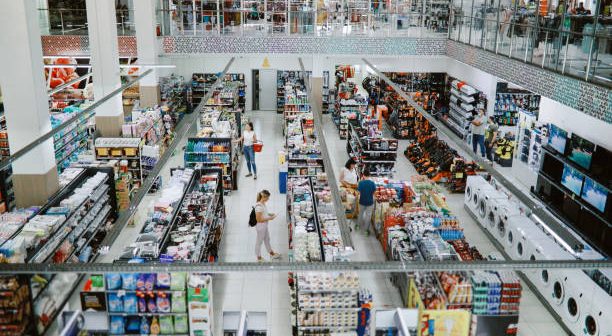India’s retail landscape is undergoing a seismic shift as big box retailers—large, chain stores offering a wide range of goods—steadily gain traction. This rise poses a serious threat to traditional cooperatives, which have long held sway in both rural and urban markets. Here’s an in-depth look at why big box retailers might soon dominate the Indian retail market, and how cooperatives are struggling to keep pace.
Growth of Big Box Retailers in India
The rapid growth of large retail chains like Reliance Retail, D-Mart, and Amazon India has reshaped consumer habits. These retailers are leveraging their size and resources to offer a wider variety of goods at lower prices, thanks to economies of scale. As of 2024, Reliance Retail operates over 15,000 stores, while D-Mart has around 330 stores across the country. Both players have seen a consistent annual revenue growth of over 20% in recent years.
Reliance Retail, for instance, posted a revenue of ₹2.60 trillion in FY2023, while D-Mart crossed ₹34,000 crores in sales during the same period. These numbers dwarf most cooperative societies like AMUL or Nandini, which, though significant players in specific categories (such as dairy), struggle to match the sheer volume and variety offered by big box stores.
Why Cooperatives Are Losing Ground
- Economies of Scale: Big box retailers can procure goods in bulk, negotiate better rates with manufacturers, and offer lower prices to consumers. D-Mart’s operating model of high inventory turnover with low operating costs allows them to undercut prices compared to local cooperatives, which operate on thinner margins.
- Supply Chain Efficiency: Big box retailers benefit from advanced logistics and supply chain technologies. For example, Amazon India has invested heavily in its warehouse and delivery infrastructure, including over 60 fulfilment centers and a fleet of delivery vehicles. On the other hand, cooperatives, particularly in rural areas, often lack the technological infrastructure to manage their supply chains effectively, leading to higher costs and inefficiencies.
- Technology and E-commerce Integration: The rise of online shopping has been another major factor driving the success of big box retailers. Reliance’s JioMart has aggressively expanded its online-to-offline (O2O) platform, offering customers the convenience of online shopping combined with local store delivery. E-commerce giant Flipkart, with its grocery arm Flipkart Supermart, has also made significant inroads. In contrast, cooperatives have been slower to adopt digital technologies, limiting their appeal to tech-savvy, urban consumers.
- Consumer Preferences: Indian consumers are increasingly drawn to the convenience of one-stop shopping at big box retailers, where they can buy everything from groceries to electronics under one roof. Cooperatives, while trusted for quality in specific categories (such as dairy or agricultural products), often lack the variety and convenience that consumers now demand.
The Challenges Faced by Cooperatives
Cooperatives such as AMUL, Nandini, and IFFCO have been pillars of the Indian economy, particularly in rural areas. However, their decentralized and often bureaucratic management structures have impeded their ability to adapt to the fast-changing retail environment.
For example, AMUL, with revenues of ₹55,055 crores in FY2023, still faces challenges in expanding beyond its core dairy products into other categories. Moreover, the cooperative model, which prioritizes member welfare over profit maximization, limits their ability to compete with aggressive, profit-driven private companies like Reliance Retail or Big Bazaar.
Future Outlook: Will Cooperatives Survive?
While big box retailers are gaining ground, cooperatives still hold a critical advantage in certain niche sectors, particularly in rural areas. Their deep-rooted trust and strong member networks can provide a competitive edge in specialized categories like agriculture and dairy. However, for cooperatives to survive in the long term, they must invest in technology, improve operational efficiencies, and adopt more customer-centric approaches.
Conclusion
The Indian retail sector is at a critical juncture. Big box retailers, with their large-scale operations, technological advantages, and consumer-centric models, are poised to push cooperatives out of many urban and semi-urban markets. While cooperatives will likely continue to play a role, especially in rural India, their market share is expected to shrink unless they adapt to the rapidly evolving retail landscape. The shift in consumer preferences towards convenience, variety, and price competitiveness is driving this change, and the future appears to belong to large, well-resourced retailers.





